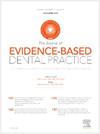DEEP LEARNING-DRIVEN SEGMENTATION OF DENTAL IMPLANTS AND PERI-IMPLANTITIS DETECTION IN ORTHOPANTOMOGRAPHS: A NOVEL DIAGNOSTIC TOOL
IF 4
4区 医学
Q1 DENTISTRY, ORAL SURGERY & MEDICINE
引用次数: 0
Abstract
Introduction and Objective
Dental implants are well-established for restoring partial or complete tooth loss, with osseointegration being essential for their long-term success. Peri-implantitis, marked by inflammation and bone loss, compromises implant longevity. Current diagnostic methods for peri-implantitis face challenges such as subjective interpretation and time consumption. Our deep learning-based approach aims to address these limitations by providing a more accurate and efficient solution. This study aims to develop a deep learning-based approach for segmenting dental implants and detecting peri-implantitis in orthopantomographs (OPGs), enhancing diagnostic accuracy and efficiency.
Materials and Methods
After applying exclusion criteria, 7696 OPGs were used in the study, which was ethically authorized by the Near East University Ethics Review Board. Using the Python-implemented U-Net architecture, the DICOM-formatted images were segmented and converted into PNG files. The classification model used a convolutional neural network (CNN) for distinguishing between healthy implants and those affected by peri-implantitis, leveraging features extracted from the segmented regions to enhance diagnostic accuracy. The model was trained for 500 epochs using the Adam optimizer, with the dataset split into training (70%), validation (15%), and test (15%) sets. Dice similarity coefficient (DSC) and accuracy were used to assess segmentation performance. Three medical professionals used precision, recall, and F1-score to assess the classification model after segmentation, which determined whether implants were showing signs of peri-implantitis.
Results
The segmentation model achieved a test accuracy of 0.999, Dice Similarity Coefficient (DSC) of 0.986, and Intersection over Union (IoU) of 0.974. For classification, out of 3693 implants, 638 were clinically identified as having peri-implantitis. The model correctly identified 576 of these, with 165 false positives. Performance metrics included a precision of 0.777, recall of 0.903, and F1-score of 0.835.
Conclusion
The deep learning-based approach for segmentation and classification of dental implants and peri-implantitis in OPGs is highly effective, providing reliable tools for enhancing clinical diagnosis and treatment planning.
牙种植体的深度学习驱动分割和牙种植体周围炎检测:一种新的诊断工具
牙种植体在修复部分或全部牙齿缺失方面是公认的,骨整合是其长期成功的关键。种植体周围炎,以炎症和骨质流失为特征,影响种植体的使用寿命。目前种植体周围炎的诊断方法面临主观解释和时间消耗等挑战。我们基于深度学习的方法旨在通过提供更准确、更有效的解决方案来解决这些限制。本研究旨在开发一种基于深度学习的方法,用于骨科断层摄影(OPGs)中牙种植体的分割和种植体周围炎的检测,以提高诊断的准确性和效率。材料与方法经近东大学伦理审查委员会伦理授权,应用排除标准后,本研究共使用了7696颗opg。使用python实现的U-Net架构,对dicom格式的图像进行分割并转换为PNG文件。该分类模型使用卷积神经网络(CNN)来区分健康种植体和受种植体周围炎影响的种植体,利用从分割区域提取的特征来提高诊断准确性。使用Adam优化器对模型进行500次epoch的训练,将数据集分为训练集(70%)、验证集(15%)和测试集(15%)。使用骰子相似系数(DSC)和准确率来评估分割性能。三位医学专业人员使用准确率、召回率和f1评分来评估分割后的分类模型,以确定种植体是否显示种植体周围炎的迹象。结果该分割模型的检验准确率为0.999,骰子相似系数(DSC)为0.986,交集/联合(IoU)为0.974。对于分类,在3693个种植体中,638个临床鉴定为种植体周围炎。该模型正确识别了其中的576个,其中有165个误报。性能指标包括精度为0.777,召回率为0.903,f1得分为0.835。结论基于深度学习的方法对OPGs种植体和种植周炎的分割和分类是非常有效的,为加强临床诊断和治疗计划提供了可靠的工具。
本文章由计算机程序翻译,如有差异,请以英文原文为准。
求助全文
约1分钟内获得全文
求助全文
来源期刊

Journal of Evidence-Based Dental Practice
DENTISTRY, ORAL SURGERY & MEDICINE-
CiteScore
6.00
自引率
16.70%
发文量
105
审稿时长
28 days
期刊介绍:
The Journal of Evidence-Based Dental Practice presents timely original articles, as well as reviews of articles on the results and outcomes of clinical procedures and treatment. The Journal advocates the use or rejection of a procedure based on solid, clinical evidence found in literature. The Journal''s dynamic operating principles are explicitness in process and objectives, publication of the highest-quality reviews and original articles, and an emphasis on objectivity.
 求助内容:
求助内容: 应助结果提醒方式:
应助结果提醒方式:


